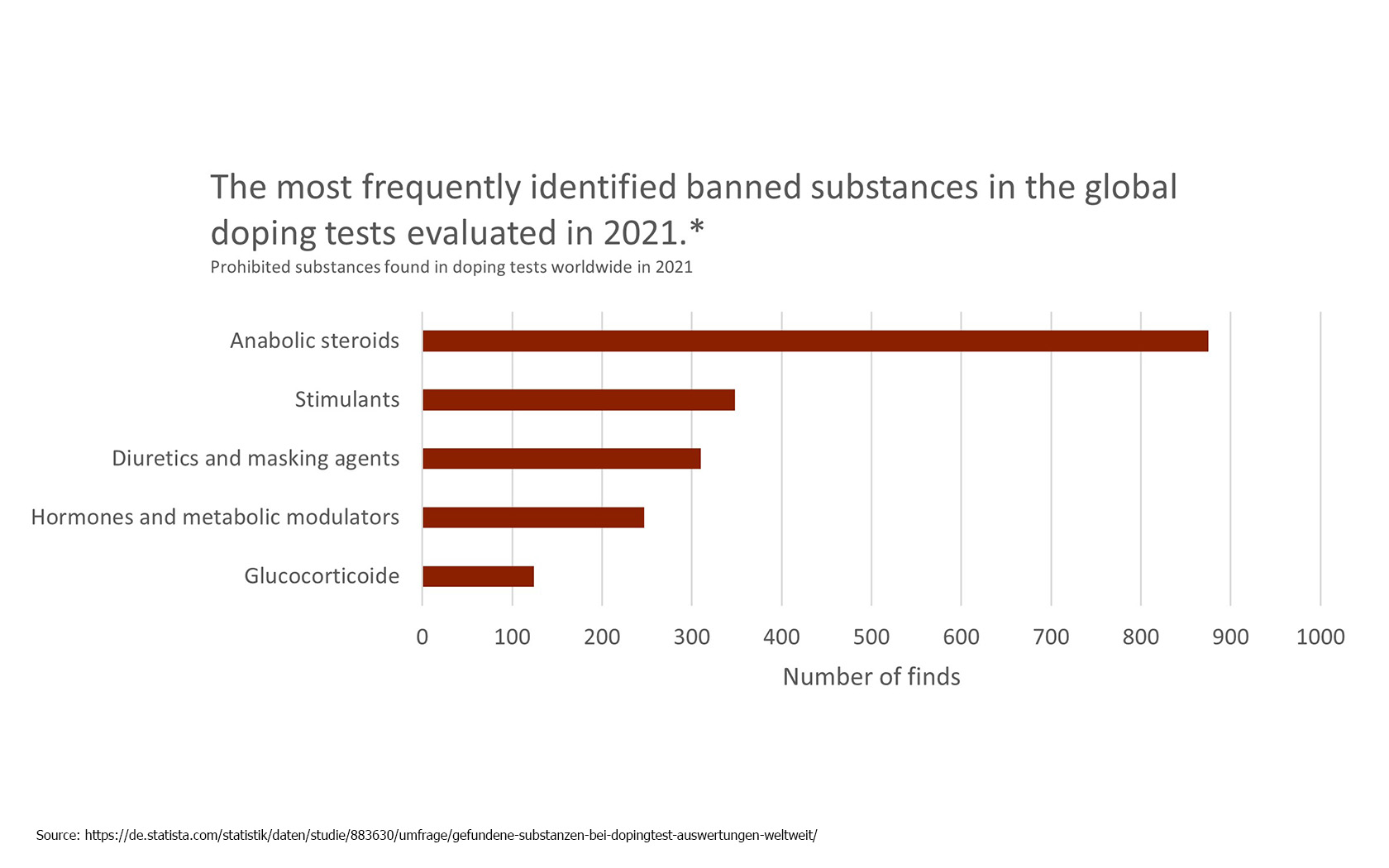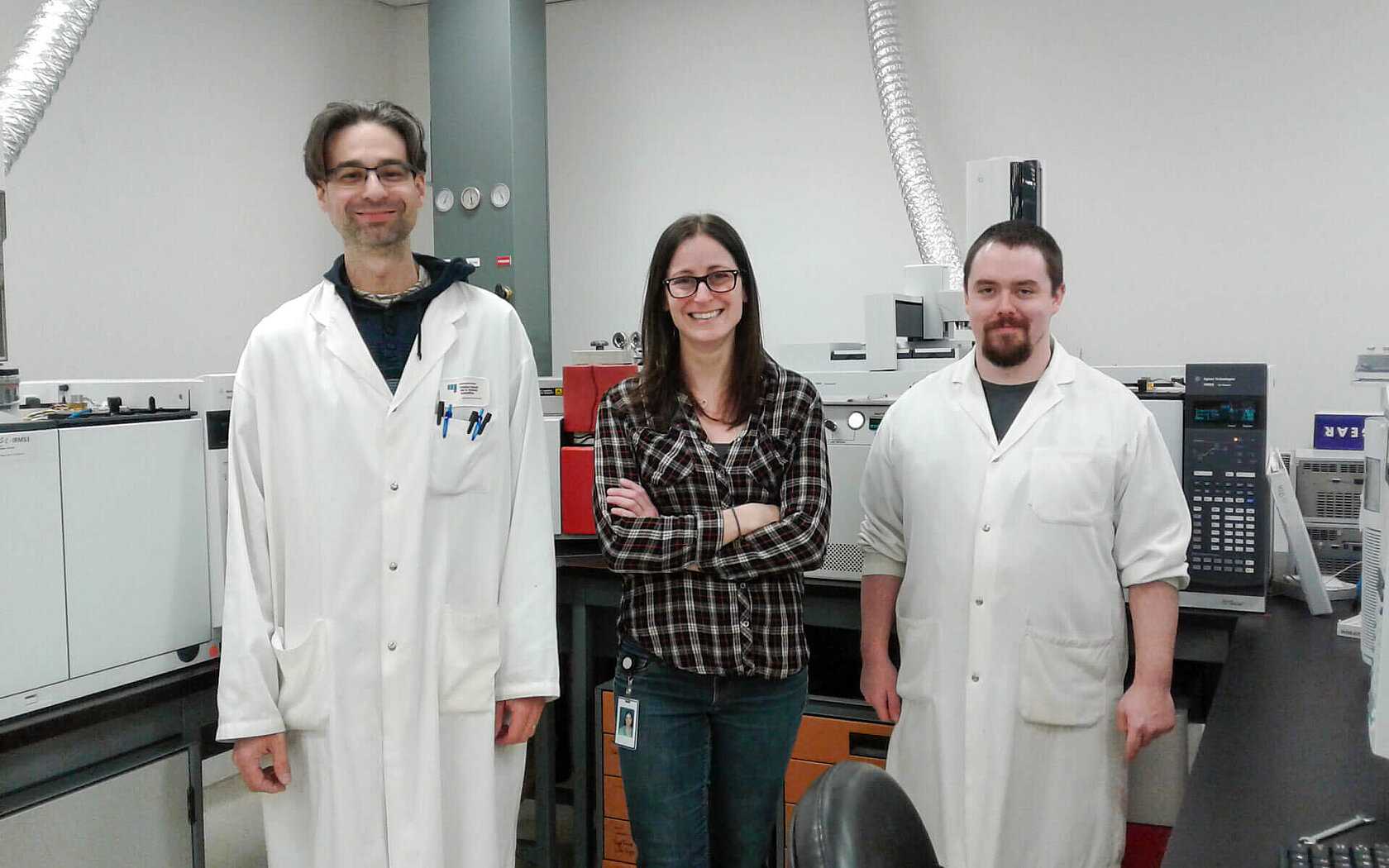Detecting synthetic steroids – how stable isotope analysis supports the values of the Olympic games

History of doping at the Olympic Games
The practice of doping in sport has a long history, with evidence of its use dating back to ancient times. As early as the first Olympic Games in 776 BC, athletes are said to have used various substances to enhance their performance. In the modern era of the Olympic Games, the problem of doping was first taken seriously in the 1960s. The tragic death of the Danish cyclist Knud Enemark Jensen during the 1960 Olympic Games in Rome due to the use of amphetamines marked a turning point in the way that doping was addressed.
Over the following decades, the methods used to administer doping substances and the substances themselves continued to evolve. Anabolic steroids, growth hormones and erythropoietin (EPO) became increasingly prevalent. This development gave rise to a series of high-profile scandals, including that of Marion Jones, one of the most successful female athletes at the 2000 Olympic Games. Jones confessed to using anabolic steroids, including testosterone, in 2007. Consequently, she was stripped of her five Olympic medals and was sentenced to six months in prison for perjury before a grand jury.

Development of anti-doping initiatives
Against the backdrop of the growing doping problem, international measures were taken with the aim of combating the misuse of performance-enhancing substances. The founding of the World Anti-Doping Agency (WADA) in 1999 was a significant development in this context.
WADA set itself the goal of establishing uniform global standards in the fight against doping and protecting the integrity of sport.
The continuous improvement of anti-doping measures is a consequence of the advances in analytics and the introduction of new test methods. Currently, state-of-the-art techniques such as gas chromatography-mass spectrometry (GC-MS), gas chromatography-isotope ratio mass spectrometry (GC-IRMS) or liquid chromatography-mass spectrometry (LC-MS) are used to detect even the smallest quantities of prohibited substances. Furthermore, blood and urine samples are collected not only during competitions, but also during training and outside of competition periods in order to obtain a comprehensive overview of the athletes' long term physiological state.
The GC-IRMS method is uniquely capable of ascertaining whether an athlete has resorted to the use of performance-enhancing anabolic steroids or whether their sporting success is attributable to their inherent performance capabilities. Because it is the only technique capable of making this distinction, the World Anti-Doping Agency (WADA) has declared GC-IRMS to be a mandatory analytical technique for doping analysis in sport and its implementation and testing criteria are described in WADA Technical Document TD2022IRMS.

Detection methods
The following section presents a detection method using testosterone as an example. This method is divided into various steps.
- Sample collection: A urine sample is most used because it is easy to collect and analyse. In some cases, a blood sample may also be taken to obtain additional information or to measure other parameters.
The actual analysis then takes place in several steps, depending on what is found:
- Gas chromatography-mass spectrometry (GC-MS) identifies and quantifies the separated substances based on their mass and fragmentation patterns and allows for anomalies in the atheltes urine to be identified.
- Measurement of the testosterone/epitestosterone (T/E) ratio: Normally, this ratio in unadulterated urine is 1:1. An increased ratio (e.g. over 4:1) can be an indicator of testosterone doping which therefore triggers a subsequent analysis using isotope ratio mass spectrometry. Other markers: other steroid hormones and their metabolites are also measured to obtain a more comprehensive picture and to identify possible masking agents or other doping-relevant substances.
- Isotope ratio mass spectrometry (IRMS) is used to distinguish between endogenous (body's own) and exogenous (supplied) anabolic androgenic steroids since exogenous steroids have a significantly different ratio of carbon isotopes (13C to 12C) compared to endogenously produced steroids. Using guidelines laid down by WADA, the results of the IRMS test can confirm if the athlete has used endogenous anabolic androgenic steroids or not.
- Long-term profiling: Athletes are often tested over a longer period of time in order to establish individual baseline values and better recognise deviations from them.
Finally, the results are interpreted:
- The results of the tests are interpreted by experts who take into account factors such as the athlete's physiological condition, possible medical exceptions and other relevant information.
The detection of the use of exogenous anabolic steroids such as testosterone, described above is a complex process that requires highly specialised techniques and comprehensive biochemical analyses. By combining high performance analytical techniques like GC-MS & GC-IRMS laboratories can reliably determine both the presence and the source of testosterone in an athlete’s urine.
In particular, at major sporting events, GC-IRMS systems must be capable of reliably analysing a multitude of samples in a continuous and uninterrupted manner whilst delivering the exceptional analytical performance. Further detailed information about GC-IRMS analysis of urinary metabolites of anabolic steroids can be found in our application note, which can be accessed via the following link.
Doping tests at the 2024 Olympic Games in Paris
At the 2024 Olympic Games in Paris, anti-doping measures will be further tightened to ensure the Games are fair and clean. Over 1,000 volunteers and professionals will be involved in delivering anti-doping controls throughout the Games, whilst the specialist analytical laboratories in Paris have moved to a custom new building and the workforce has tripled to 120 people3. In order to identify and prevent the emergence of new doping methods at an early stage, international anti-doping agencies, sports federations, scientific institutions, and laboratory equipment manufacturers will intensify their cooperation.

The Olympic Games in Paris provide an opportunity to demonstrate the successes in the fight against doping and a platform for athletes to showcase their achievements in a fair and respectful competition. By pursuing continuous innovation and maintaining an unwavering commitment to the fight against doping, the Olympic spirit of fairness and integrity will be upheld.
In light of the background information and the imminent competitions in Paris, it becomes evident that the ongoing endeavours in the field of doping prevention are of paramount importance in order to safeguard the integrity of sport and its values.
Doping testing at INRS - Institut Armand-Frappier, Canada
In our experience, the Elementar instruments have given us better stability and sensitivity than any other system. In contrast to other instruments where oxygen is introduced to the combustion furnace using a backflush technique the Elementar GC-C-IRMS system allows us to add an oxygen bleed to the carrier gas. This bleed maintains uniform oxidation conditions for lengthy sample sequences (> 40 hours) in contrast to the oxygen backflush which is performed only once prior to a sample sequence and necessarily equates to the decaying oxygen content in the furnace tube causing variable instrument conditions.
Dr Lalonde, researcher at the INRS Anti-Doping laboratory in Montreal
The INRS – Institut Armand-Frappier is using an IsoPrime100 IRMS to reveal testosterone doping. Read here our Customer Spotlight

Find out more
The analysis of steroids according to the World Anti-Doping Agency (WADA) technical documents TD2016IRMS is carried out using compound-specific stable carbon isotope analysis of urinary extracts.
This Application Note shows the analysis of urinary extracts with our AnthrovisION GC-C-IRMS system, which yields excellent results.

DOWNLOAD YOUR COPY
Fill in the form to receive your download link per e-mail.
Your contractual consideration for the free provision of the download is the subscription to our personalized newsletter. By clicking on the “download now” button, you therefore declare your acceptance of the receipt of personalized newsletters by e-mail by Elementar India Pvt Limited and its group companies as well as the evaluation of your user behavior in this regard and - if available - the merging of this data with your data in our customer database.
In order to receive newsletters from our group companies it is necessary to transfer your above-mentioned personal data to these companies. The data transfer is contractually required.
You are aware that the subscription to our personalized newsletter represents the contractual consideration that you provide for the free provision of the download. You can unsubscribe from the newsletter at any time with effect for the future. You can object to the future use of your data for advertising purposes at any time. For further information, please refer to our privacy policy.
Do not miss any new articles
NEWSLETTER
We will constantly publish new blog articles. Register for our newsletter to stay up-to-date and get informed about latest blog articles, news and trends.
